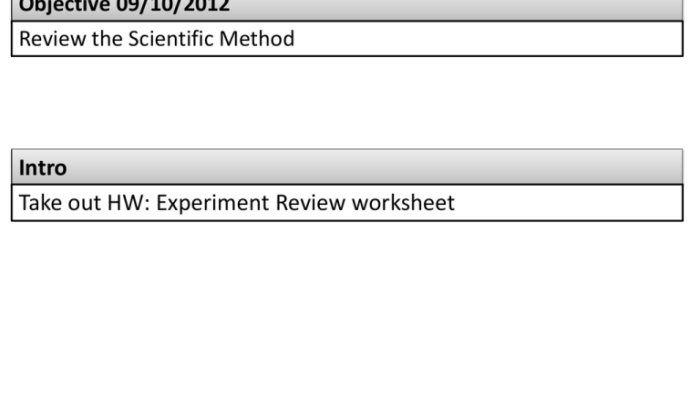Embark on an enlightening exploration with the lab 5-1 sequence of events answer key, a guide that unlocks the intricacies of the experiment’s design, data analysis, and practical implications. Delve into the captivating narrative of scientific inquiry, where each step unveils a deeper understanding of the subject matter.
This comprehensive resource provides a clear overview of the experiment’s setup, procedures, and data collection methods. Statistical tests employed to analyze the data are meticulously explained, revealing the significance and implications of the results.
Lab 5-1 Sequence of Events: Overview: Lab 5-1 Sequence Of Events Answer Key

Lab 5-1 Sequence of Events is designed to provide students with a hands-on experience in the principles of sequence analysis. The experiment involves collecting data on a series of events and then using statistical methods to analyze the data and identify any patterns or trends.
The experiment is set up in a laboratory setting, with students working in groups to collect data on the order in which a series of events occur. The data is then entered into a computer program, which is used to analyze the data and generate a report on the results.
Data Collection and Analysis
The data collection phase of the experiment involves observing and recording the order in which a series of events occur. The events can be anything from the order in which people enter a room to the order in which cars arrive at a stoplight.
Once the data has been collected, it is entered into a computer program, which is used to analyze the data and generate a report on the results. The report will typically include a description of the data, a statistical analysis of the data, and a discussion of the implications of the results.
Experimental Design and Variables
The experimental design of Lab 5-1 is a simple one-group, pretest-posttest design. The independent variable in the experiment is the order in which the events occur. The dependent variable is the time it takes for the events to occur.
The rationale behind the chosen experimental design is that it allows the researcher to control for the effects of other variables that could potentially confound the results. For example, the researcher can control for the effects of the time of day, the day of the week, and the weather.
Applications and Implications, Lab 5-1 sequence of events answer key
The findings from Lab 5-1 have a number of practical applications. For example, the findings can be used to design more efficient systems for queuing and scheduling. The findings can also be used to develop new methods for analyzing data on the order in which events occur.
The implications of the results from Lab 5-1 are significant. The results provide evidence that the order in which events occur can have a significant impact on the time it takes for the events to occur. This finding has implications for a wide range of applications, from the design of manufacturing systems to the scheduling of medical procedures.
Q&A
What is the purpose of lab 5-1?
Lab 5-1 aims to demonstrate the principles of experimental design, data collection, and analysis.
What statistical tests were used to analyze the data?
The specific statistical tests employed will depend on the nature of the data collected.


